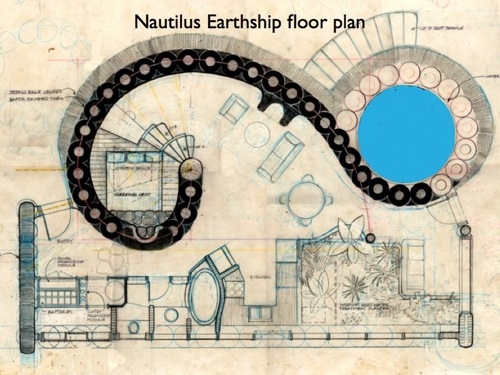
In Medellin, Columbia, Plan B Architects and JPRCR have successfully incorporated organic architectural aesthetics with a functional design that interacts with both people and its surrounding environment. The Orquideorama Gardens are made up of 14 interconnected modular structures which serve as public spaces, event halls, butterfly and bird reserves, flower gardens, as well as shade and shelter for tourists and residents. The tree-like forms portray organicism through their form, materiality, and function. The form uses the “petal” canopy to provide shade and to collect rain water, diverting this water downward to be used by the pavilions below. This natural irrigation process allows for plants and animals to be kept within the structure, further tying it to nature and the forest surrounding it. The choice of materials (a wooden cladding) enhances the imagery behind this. Altogether, a singular organic form serves multiple purposes, bringing down the barriers between the natural and artificial visually and functionally.
— Wesley Ratliff
RESEARCH RESOURCES
“Organic Architecture.” 2013. TrendHunter.com. Accessed September 4. http://www.trendhunter.com/trends/orquideorama-gardens-in-columbia.
This is a very short introduction the the Orquideorama Gardens. It gives the basic information regarding the structure, but more importantly, has many photos of the Gardens and other similar structures which would be useful for continued research into the subject.
“Orquideorama / Plan B Architects + JPRCR Architects.” 2013. ArchDaily. Accessed September 5. http://www.archdaily.com/832/orquideorama-plan-b-architects-jprcr-architects/.
A much more involved and detailed description of the project, Archdaily did a full piece on the Gardens with many photos from different angles and vantage points as well as diagrams showing the layout and construction.
“ORQUIDEORAMA: A Beautiful Floating Meshwork of Modular Flower Tree Structures.” 2013. Accessed September 6. http://inhabitat.com/waxing-architectural-on-columbias-orquideorama/.
Inhabitat did a simple piece on the Gardens containing the basic information but also a number of photos showing the experience of the place.




 The original proposal included technologically embedded “braincoats”. Occupants were given questionnaires to fill out and the results would then be embedded into the sensors of the coat. The braincoats contained sensors which would react with the coats of others which had similar interests. This would give people an artificial “sixth sense” and allow users to interact in a way which doesn’t involve words. The original intent was to have a create architectural experience though a completely abstract sense of interaction and have a digital data cloud which complements the physical water cloud.
The original proposal included technologically embedded “braincoats”. Occupants were given questionnaires to fill out and the results would then be embedded into the sensors of the coat. The braincoats contained sensors which would react with the coats of others which had similar interests. This would give people an artificial “sixth sense” and allow users to interact in a way which doesn’t involve words. The original intent was to have a create architectural experience though a completely abstract sense of interaction and have a digital data cloud which complements the physical water cloud.



